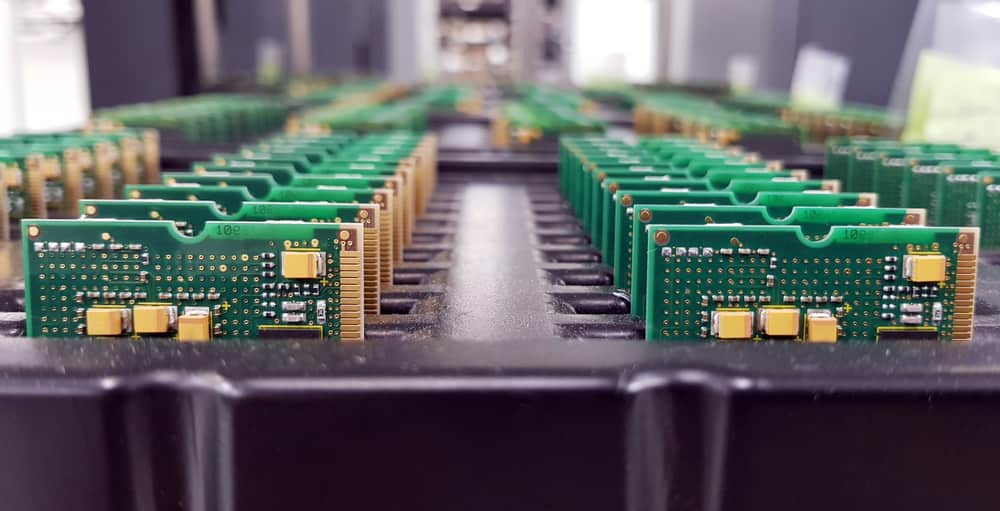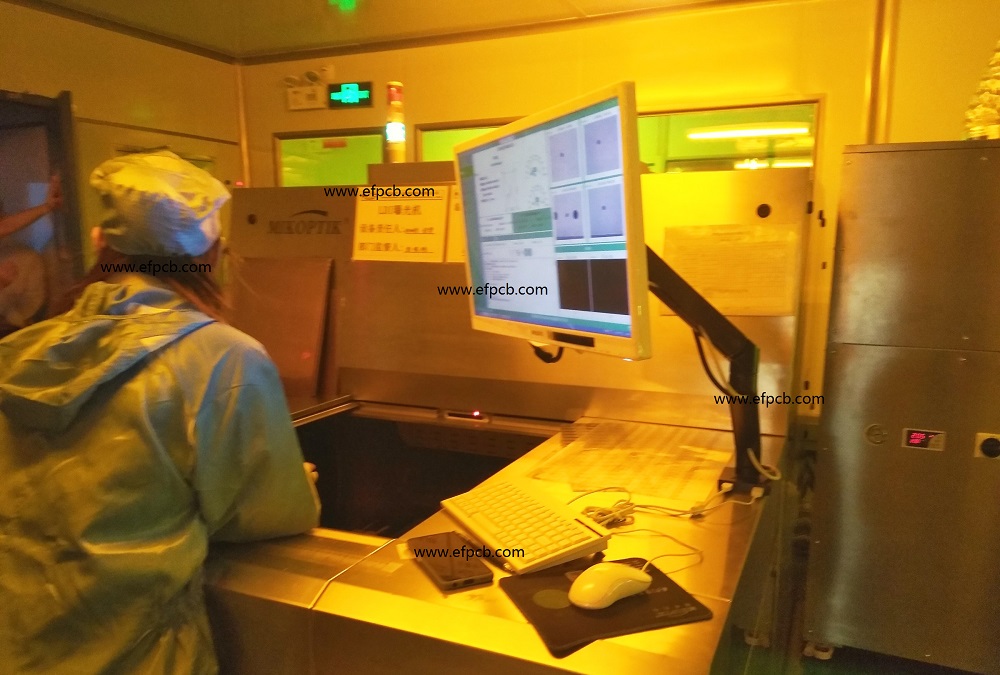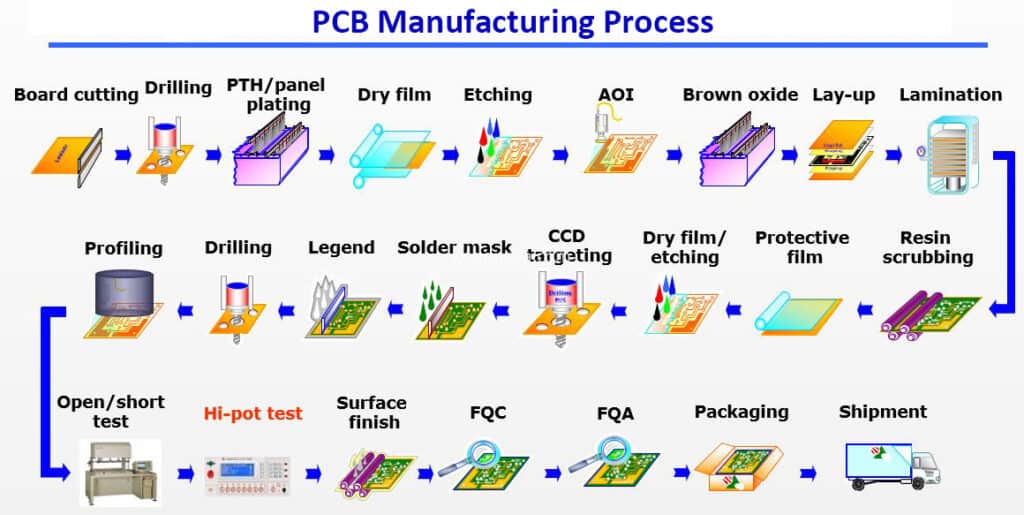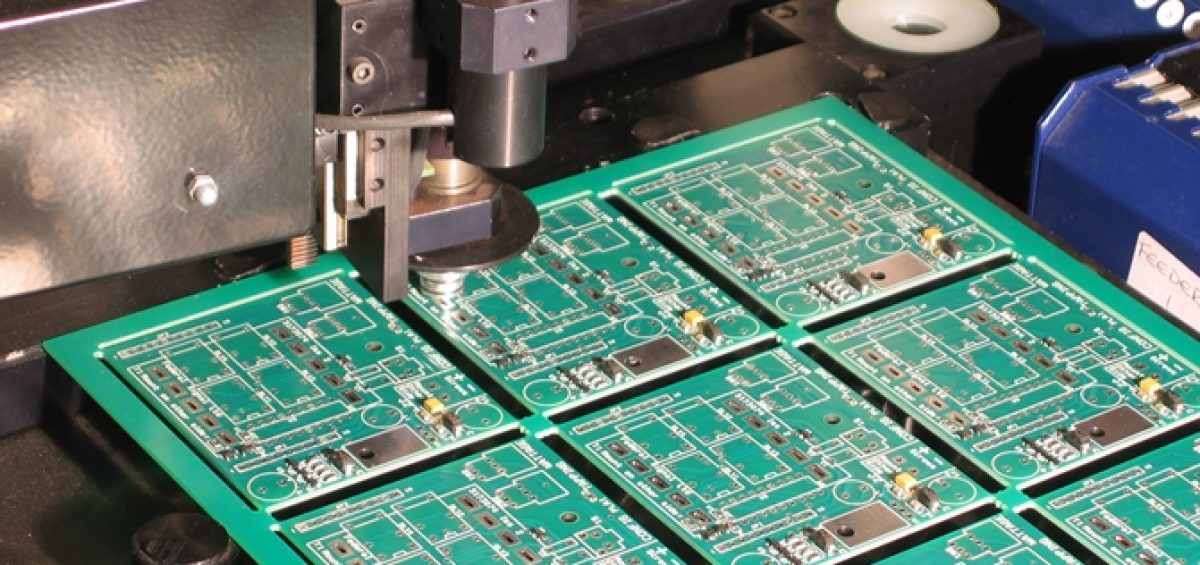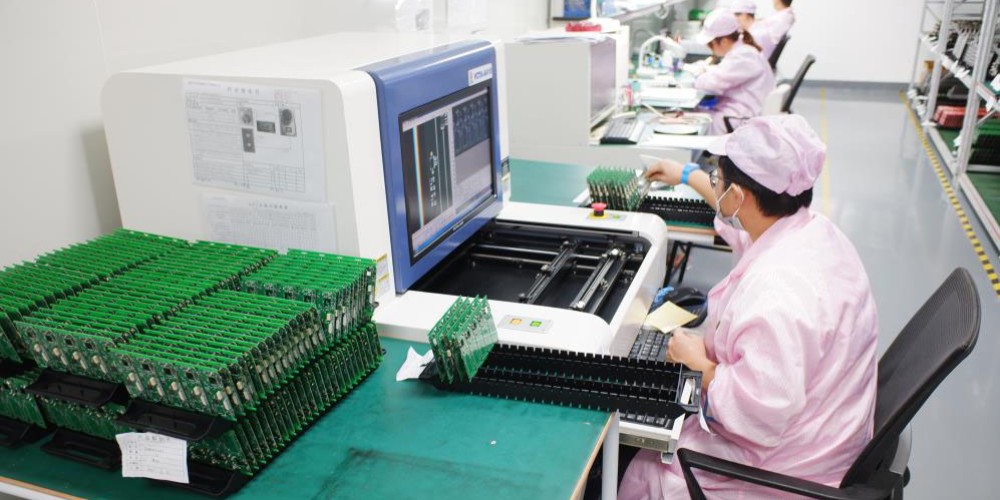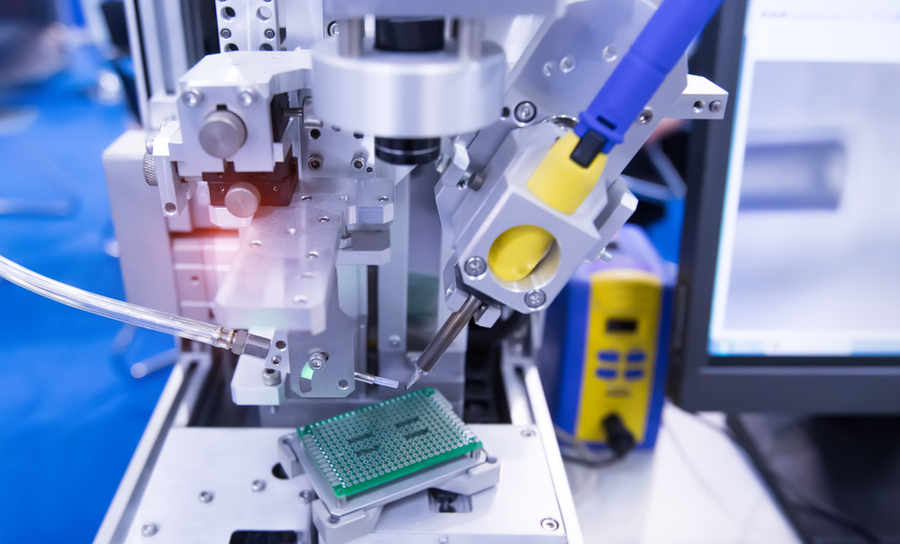What is PCB Manufacturing and Why is it Important?
Printed Circuit Board (PCB) manufacturing is the process of creating the backbone of modern electronics, connecting various components such as microchips, capacitors, and resistors to form a functional electronic device. The significance of PCB manufacturing lies in its ability to enable the production of complex electronic systems, from smartphones and laptops to medical devices and aerospace systems.
The electronics industry relies heavily on PCB manufacturing, with the global market projected to reach $80 billion by 2025. As the demand for electronic devices continues to grow, the need for efficient and innovative PCB manufacturing methods has become increasingly important. Traditional PCB manufacturing methods, however, are often limited by high costs, limited flexibility, and environmental concerns.
In recent years, the rise of PCB manufacturing equipment startups has revolutionized the industry, offering innovative solutions to these challenges. These startups have developed cutting-edge technologies, such as automation and robotics, to improve efficiency, reduce costs, and minimize environmental impact. As a result, PCB manufacturing equipment startups have become a crucial part of the electronics industry, enabling the production of high-quality electronic devices while promoting sustainability and innovation.
The importance of PCB manufacturing extends beyond the electronics industry, with applications in various sectors, including healthcare, aerospace, and automotive. As technology continues to advance, the demand for PCB manufacturing is expected to grow, driving the need for innovative and efficient production methods. By understanding the basics of PCB manufacturing and its significance, we can appreciate the impact of PCB manufacturing equipment startups on the industry and the wider economy.
Challenges Faced by Traditional PCB Manufacturing Equipment
Traditional PCB manufacturing equipment has been the backbone of the electronics industry for decades, but it is not without its limitations. One of the primary challenges faced by traditional PCB manufacturing equipment is the high cost of production. The equipment itself is often expensive to purchase and maintain, and the cost of labor, materials, and energy can add up quickly.
Another significant challenge is the limited flexibility of traditional PCB manufacturing equipment. As electronic devices become increasingly complex, the need for customized and specialized production methods grows. Traditional equipment, however, is often designed for high-volume production and may not be adaptable to changing product requirements.
Environmental concerns are also a major issue for traditional PCB manufacturing equipment. The production process often involves the use of hazardous chemicals, such as lead and cadmium, which can harm the environment and human health. Additionally, the energy consumption and waste generation associated with traditional PCB manufacturing can have a significant impact on the environment.
These challenges have created an opportunity for PCB manufacturing equipment startups to innovate and provide solutions that address these limitations. By developing new technologies and production methods, these startups can help reduce costs, increase flexibility, and minimize environmental harm. As the demand for electronic devices continues to grow, the need for efficient and sustainable PCB manufacturing equipment will only continue to increase.
The limitations of traditional PCB manufacturing equipment have also led to a growing interest in alternative production methods, such as 3D printing and nanotechnology. These emerging technologies have the potential to revolutionize the PCB manufacturing industry, enabling the production of complex electronic devices with increased speed, accuracy, and sustainability.
How to Choose the Right PCB Manufacturing Equipment for Your Startup
As a startup, selecting the right PCB manufacturing equipment can be a daunting task. With so many options available, it’s essential to consider several factors to ensure you choose the most suitable equipment for your business. One of the primary considerations is budget. PCB manufacturing equipment can range from a few thousand dollars to hundreds of thousands of dollars, so it’s crucial to set a budget and stick to it.
Production volume is another critical factor to consider. If you’re producing small batches of PCBs, you may not need high-volume equipment. However, if you’re planning to scale up production, you’ll need equipment that can handle large volumes. Product complexity is also an essential consideration. If you’re producing complex PCBs with multiple layers and fine pitch components, you’ll need equipment that can handle these requirements.
Additionally, consider the level of automation and robotics you need. While automated equipment can increase efficiency and reduce labor costs, it may also require significant upfront investment. On the other hand, manual equipment can be more affordable but may require more labor and time.
When evaluating PCB manufacturing equipment startups, look for companies that offer flexible and scalable solutions. These startups often provide innovative equipment and services that can adapt to changing production requirements. Some notable PCB manufacturing equipment startups offer modular equipment that can be easily upgraded or reconfigured as production needs change.
It’s also essential to consider the level of support and service provided by the equipment manufacturer. Look for companies that offer comprehensive training, maintenance, and repair services to ensure your equipment runs smoothly and efficiently.
By carefully considering these factors, you can choose the right PCB manufacturing equipment for your startup and set yourself up for success in the competitive electronics industry.
Top PCB Manufacturing Equipment Startups to Watch
The PCB manufacturing equipment startup landscape is rapidly evolving, with new companies emerging to address the challenges of traditional equipment. Some notable startups are making waves in the industry with their innovative solutions, products, and services.
One such startup is Tempo Automation, a company that offers a cloud-based platform for PCB manufacturing. Tempo’s platform allows users to design, manufacture, and assemble PCBs in a matter of days, rather than weeks or months. This startup is revolutionizing the way PCBs are made, making it faster, cheaper, and more efficient.
Another startup to watch is Fictiv, a company that offers a range of PCB manufacturing equipment and services. Fictiv’s equipment is designed to be flexible and scalable, making it ideal for startups and small businesses. The company also offers a range of services, including design, prototyping, and production.
Other notable PCB manufacturing equipment startups include MacroFab, a company that offers a range of PCB manufacturing equipment and services, and PCBWay, a company that specializes in PCB prototyping and production. These startups are pushing the boundaries of what is possible in PCB manufacturing, making it faster, cheaper, and more efficient.
These startups are not only innovating in terms of technology but also in terms of business models. Many of them offer subscription-based services, pay-per-use models, and other flexible pricing options that make it easier for startups and small businesses to access PCB manufacturing equipment.
As the demand for PCBs continues to grow, these startups are well-positioned to capitalize on the trend. With their innovative solutions, products, and services, they are revolutionizing the PCB manufacturing industry and making it more accessible to a wider range of businesses.
The Role of Automation and Robotics in Modern PCB Manufacturing
Automation and robotics are playing an increasingly important role in modern PCB manufacturing. By leveraging advanced technologies, PCB manufacturing equipment startups are able to improve efficiency, reduce labor costs, and enhance product quality.
One of the key benefits of automation in PCB manufacturing is the ability to increase production speed and accuracy. Automated equipment can perform tasks such as component placement, soldering, and inspection with precision and speed, reducing the risk of human error and improving overall product quality.
Robotics is also being used in PCB manufacturing to improve efficiency and reduce labor costs. Robots can be programmed to perform tasks such as component handling, PCB assembly, and testing, freeing up human workers to focus on higher-value tasks.
Additionally, automation and robotics can help to improve the sustainability of PCB manufacturing. By reducing energy consumption and waste, automated equipment can help to minimize the environmental impact of PCB production.
PCB manufacturing equipment startups are at the forefront of this trend, developing innovative solutions that combine automation and robotics with advanced materials and manufacturing techniques. For example, some startups are using artificial intelligence and machine learning to optimize PCB manufacturing processes, while others are developing advanced robotic systems for PCB assembly and testing.
As the demand for PCBs continues to grow, the role of automation and robotics in modern PCB manufacturing is likely to become even more important. By leveraging these technologies, PCB manufacturing equipment startups can help to drive innovation and growth in the electronics industry, while also improving sustainability and reducing costs.
Sustainable PCB Manufacturing: Eco-Friendly Equipment and Practices
Sustainable PCB manufacturing is becoming increasingly important as the electronics industry continues to grow. With the rising demand for PCBs, the environmental impact of traditional manufacturing methods is becoming a significant concern. PCB manufacturing equipment startups are responding to this challenge by developing eco-friendly equipment and practices that reduce waste, energy consumption, and environmental harm.
One of the key areas of focus for sustainable PCB manufacturing is the reduction of waste. Traditional PCB manufacturing methods can generate significant amounts of waste, including chemical waste, metal waste, and packaging waste. PCB manufacturing equipment startups are developing innovative solutions to minimize waste, such as using recyclable materials, reducing chemical usage, and implementing waste reduction programs.
Energy consumption is another critical area of focus for sustainable PCB manufacturing. Traditional PCB manufacturing methods can be energy-intensive, with large amounts of energy required for heating, cooling, and powering equipment. PCB manufacturing equipment startups are developing energy-efficient solutions, such as using LED lighting, optimizing equipment performance, and implementing energy-saving programs.
PCB manufacturing equipment startups are also developing eco-friendly equipment and practices that reduce environmental harm. For example, some startups are using environmentally friendly chemicals, reducing water usage, and implementing sustainable packaging solutions.
Additionally, PCB manufacturing equipment startups are incorporating sustainable practices into their operations, such as reducing energy consumption, using renewable energy sources, and implementing recycling programs.
By adopting sustainable PCB manufacturing practices, PCB manufacturing equipment startups can reduce their environmental impact, improve their reputation, and contribute to a more sustainable future. As the demand for PCBs continues to grow, the importance of sustainable PCB manufacturing will only continue to increase.
Future Trends and Innovations in PCB Manufacturing Equipment
The PCB manufacturing equipment industry is constantly evolving, with new technologies and innovations emerging all the time. Some of the most exciting trends and innovations in PCB manufacturing equipment include advancements in 3D printing, nanotechnology, and artificial intelligence.
3D printing is one of the most significant trends in PCB manufacturing equipment. This technology allows for the rapid prototyping and production of complex PCBs, reducing the need for traditional manufacturing methods. PCB manufacturing equipment startups are developing innovative 3D printing solutions that enable the production of high-quality PCBs with increased speed and accuracy.
Nanotechnology is another area of innovation in PCB manufacturing equipment. This technology enables the production of PCBs with nanoscale features, allowing for increased density and performance. PCB manufacturing equipment startups are developing nanotechnology-based solutions that enable the production of high-performance PCBs with reduced size and weight.
Artificial intelligence (AI) is also being used in PCB manufacturing equipment to improve efficiency and quality. AI-powered systems can analyze data from the manufacturing process, identifying areas for improvement and optimizing production. PCB manufacturing equipment startups are developing AI-powered solutions that enable real-time monitoring and control of the manufacturing process.
Other emerging trends and innovations in PCB manufacturing equipment include the use of advanced materials, such as graphene and nanomaterials, and the development of new manufacturing processes, such as laser-based manufacturing. These technologies have the potential to revolutionize the PCB manufacturing industry, enabling the production of high-quality PCBs with increased speed, accuracy, and performance.
As the demand for PCBs continues to grow, the importance of innovation and technology in PCB manufacturing equipment will only continue to increase. PCB manufacturing equipment startups are at the forefront of this trend, developing innovative solutions that enable the production of high-quality PCBs with increased efficiency and performance.
Overcoming the Challenges of Scaling PCB Manufacturing for Startups
Scaling PCB manufacturing can be a significant challenge for startups. As demand for PCBs increases, startups must be able to ramp up production quickly and efficiently while maintaining quality and ensuring regulatory compliance. However, this can be difficult, especially for startups with limited resources and expertise.
One of the key challenges of scaling PCB manufacturing is managing growth. As production volumes increase, startups must be able to manage their supply chain, inventory, and logistics effectively. This can be a complex task, especially for startups with limited experience in managing large-scale production.
Maintaining quality is another critical challenge for startups scaling PCB manufacturing. As production volumes increase, startups must be able to ensure that their PCBs meet the required quality standards. This can be difficult, especially if startups are using new or untested manufacturing processes.
Ensuring regulatory compliance is also a significant challenge for startups scaling PCB manufacturing. PCBs are subject to a range of regulations, including those related to safety, environmental impact, and intellectual property. Startups must be able to ensure that their PCBs comply with these regulations, which can be a complex and time-consuming task.
To overcome these challenges, startups can take several steps. First, they can invest in automation and robotics to improve efficiency and reduce labor costs. They can also implement quality control processes to ensure that their PCBs meet the required quality standards. Additionally, startups can work with experienced contract manufacturers or PCB manufacturing equipment startups to gain access to expertise and resources.
By taking these steps, startups can overcome the challenges of scaling PCB manufacturing and achieve success in the competitive electronics industry. With the right strategies and support, startups can ramp up production quickly and efficiently while maintaining quality and ensuring regulatory compliance.

